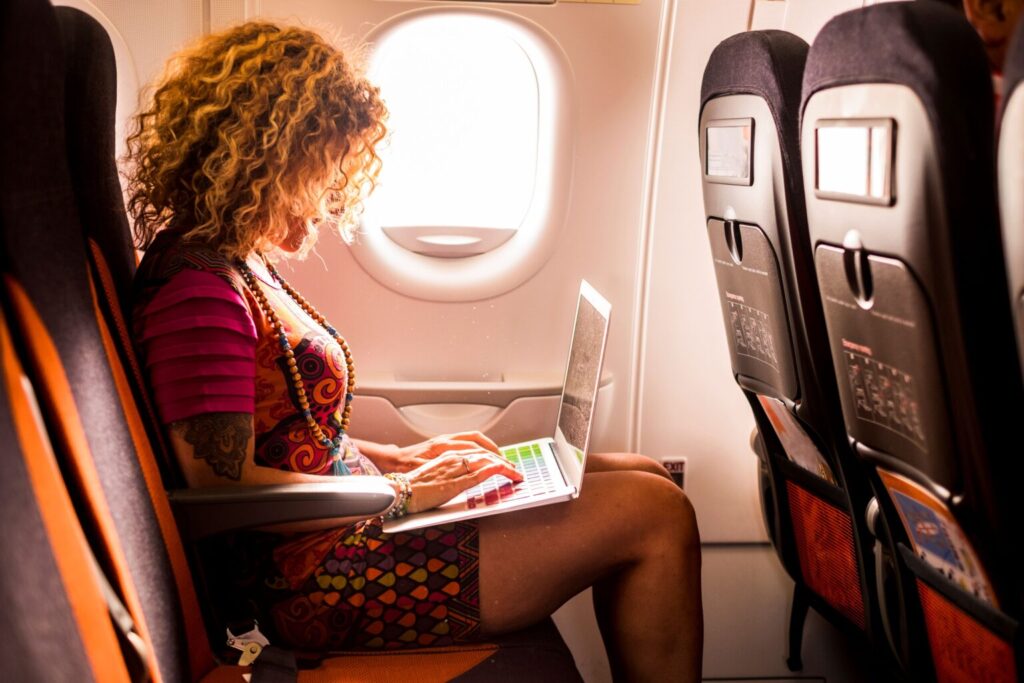Johannesburg – Seat belt sign off, laptop unplugged, and thanks to StarLink, your inbox is fully connected at cruising altitude. Welcome to the era of Sky Office.
SpaceX's Starlink Aviation deployment – Low Earth Orbit (LEO) Satellite Internet Service launched in late 2022 – is turning air travel into a constantly on workspace. Unlike traditional in-flight Wi-Fi, this next-generation system offers high-bandwidth connectivity with minimal latency thanks to low-altitude satellites and extensive network coverage. Zoom meeting. VPN access. Cloud sync. From all tray tables.
Many global carriers are already on board. United Airlines, Delta, Air France/KLM, Air New Zealand and Qatar Airlines have installed or tried StarLink on international flights. And in South Africa? Local low-cost airline FlySafair has expressed interest in offering it on domestic routes as regulatory approvals from local governments are pending.
“From a business travel perspective, this opens the door,” says Mummy Mafojane, general manager of FCM South Africa. “Working along the way allows you to stay for a few nights from your home or head office.
She adds that businesses are also making profits. “Reduced downtime means a more demanding itinerary with concrete savings from financial teams focusing on ROI per trip.”
That's a big step forward. But here is a million questions: Should you just be able to work in the air?
Why disconnecting is (still) the movement of power
The plane mode used to provide sanctuary – the unusual pocket of digital peace when unreachable was an acceptable protocol. That window closes quickly and not everyone is rooting for it.
“Due to the arrival of Starlink,” warns Mafojane. “The final frontier of protected personal time is gone. I'll talk about flexibility as a progress, but true flexibility also means allowing it not to be online all the time,” she adds.
The growing expectation that employees should always be available (even in the air) raises a red flag centered around happiness and cognitive overload. Economy Class is not designed for deep work. There is a limited legroom, privacy and a tray table that barely fits your laptop, let alone spreadsheets and delicate documents.
“If you're hoping that staff will truly perform during the flight, then business class upgrades are not generous. It's infrastructure,” says Maphojan. “You can't ask someone to provide executive-level output while balancing the device next to another person's elbow,” she says. “If productivity is the goal, comfort must be part of it.”
It falls into practical respect for the in-flight work that actually involves daily on-board operations across different classes and cabin configurations, as well as policy alignment.
Travel policy needs to be rethinked
Maphojang is the following five key areas that companies need to clarify to accommodate this innovation:
Availability Expectations
Do employees expect (or are they encouraged to check emails during the airborne or attend meetings? If yes… when? On all flights? Just long distance? People don't put pressure on getting online forever, as they need to replace default assumptions with clear guidelines.
The boundary of happiness
Just because connectivity exists doesn't mean rest is gone. Consider incorporating intentional “offline time” into your policy language or giving advice on screen time between your nightly legs (if recovery is most important).
Cabin class standards
If productivity equipment becomes a central strategy, it may be necessary to loosen up cabin upgrades based on seniority as well as on transport duties.
Digital Etiquette and Presentation
Passengers turn cabins into ad hoc office: Is the video call next door? Do noise cancelling headphones need? Should I be discouraged at a particular task unless I'm sitting personally? Companies can prevent troublesome moments by embedding etiquette reminders in pre-travel guidance materials.
Data Security Protocol
Fast speeds are not comparable to high security. Employees need to know when and how to process sensitive information on public networks such as inflight Wi-Fi. For example, using a VPN should be standard. If you have a lot of shoulder surfers, sensitive files can remain closed and screen filters can become essential accessories.
“The tools are here and they are powerful,” concludes Maphojan. But businesses need policies that protect people along with performance goals. ”


